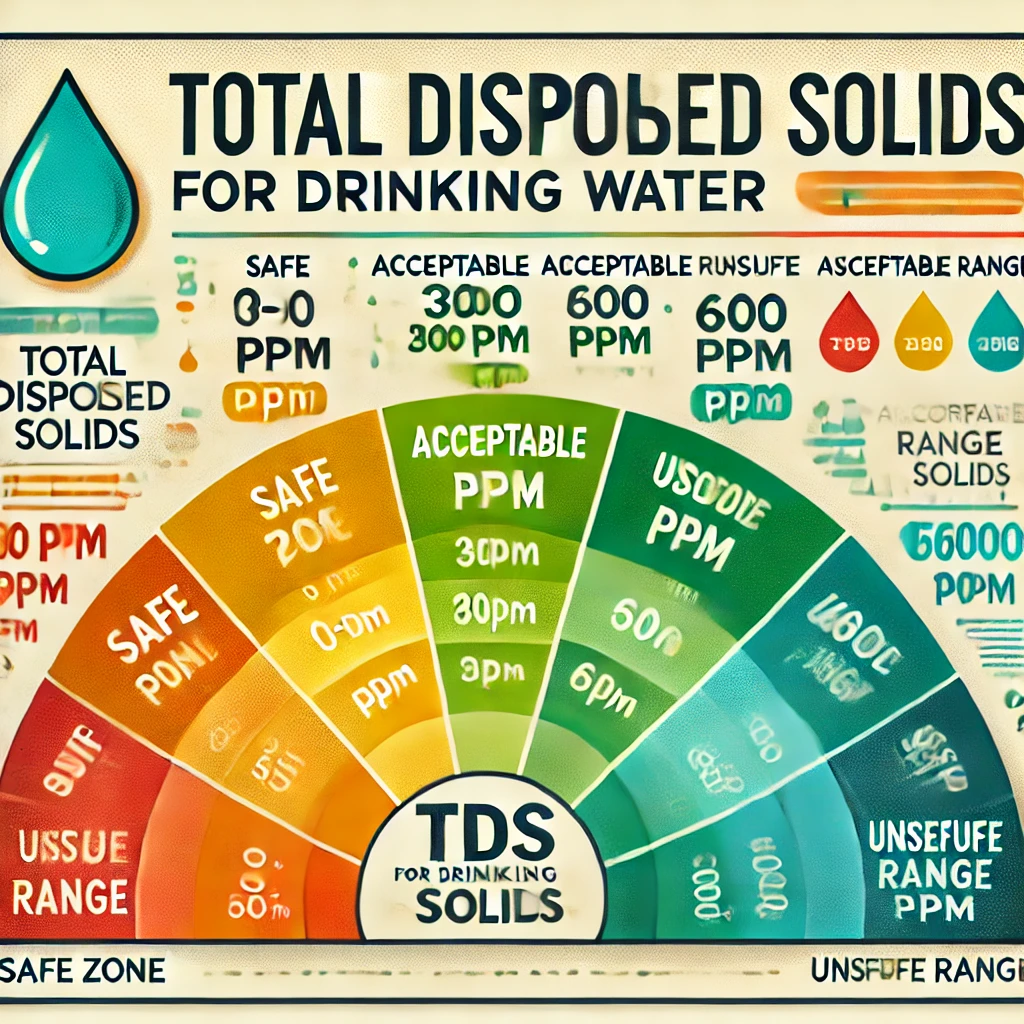

Tds For Drinking Water
TDS for Drinking Water: Understanding Its Importance
Water is the cornerstone of life, and its quality significantly impacts health and wellbeing. One of the critical parameters of water quality is Total Dissolved Solids (TDS). This article explores the significance of TDS in drinking water, its implications for health, and how to measure it effectively.
What is TDS?
TDS, or Total Dissolved Solids, refers to the total concentration of dissolved substances in water. These substances include inorganic salts like calcium, magnesium, potassium, sodium, and organic matter. TDS levels are typically measured in parts per million (ppm) or milligrams per liter (mg/L).
Why is TDS Important in Drinking Water?
The TDS level in drinking water affects its taste, safety, and overall quality. While some dissolved solids are essential for health, excessive or deficient levels can pose risks.
Ideal TDS Levels
The Bureau of Indian Standards (BIS) recommends the following guidelines for TDS in drinking water:
-
Excellent: Below 300 ppm
-
Good: 300-600 ppm
-
Fair: 600-900 ppm
-
Poor: 900-1200 ppm
-
Unacceptable: Above 1200 ppm
Health Implications of TDS
-
Low TDS Water: Water with very low TDS levels lacks essential minerals, potentially leading to deficiencies over time. Such water may also taste flat.
-
High TDS Water: Excessive TDS levels can indicate contamination by harmful substances like nitrates, arsenic, or heavy metals, posing severe health risks.
Factors Contributing to TDS in Drinking Water
TDS levels in water depend on several factors, including:
-
Natural Sources: Dissolved minerals from rocks and soil can increase TDS levels.
-
Agricultural Runoff: Fertilizers and pesticides can contribute to higher TDS.
-
Industrial Discharges: Industrial effluents often contain heavy metals and salts.
-
Municipal Water Treatment: Chemicals used in water treatment processes may add to TDS.
How to Measure TDS in Water
Measuring TDS is crucial for ensuring the water you consume is safe and of high quality. Various tools and methods are available for this purpose, including:
1. TDS Meters
Digital TDS meters are the most common tools for measuring TDS levels. They are portable, easy to use, and provide accurate readings. For example:
-
Ocean Star TDS EC Meter: This device not only measures TDS but also monitors water temperature, offering comprehensive water quality insights.
2. TDS & pH Combo Devices
Some advanced meters combine TDS and pH measurements, providing dual insights into water quality. For instance:
-
Ocean Star TDS Meter and pH Drop Testing Kit: This product allows users to test both TDS levels and water alkalinity, ensuring comprehensive water analysis.
3. Industrial Use Meters
High-precision meters are designed for industrial water testing:
-
HM TDS3 TDS Meter: Suitable for industrial applications, it ensures water used in production processes meets quality standards.
4. Portable pH Meters
While not directly measuring TDS, pH meters are crucial for assessing water quality:
-
Portable pH Meter: Ideal for quick, on-site pH measurements to complement TDS testing.
TDS and Water Purification
Water with inappropriate TDS levels can be treated using various purification methods. Popular techniques include:
-
Reverse Osmosis (RO): RO systems are highly effective in reducing TDS levels. They use a semi-permeable membrane to filter out dissolved solids, making water safe and palatable.
-
Distillation: This process involves boiling water and condensing the steam, effectively removing most dissolved solids.
-
Deionization: Deionization systems remove ionized salts and minerals, reducing TDS levels significantly.
-
Carbon Filtration: Activated carbon filters can remove organic matter and chlorine but are less effective for reducing TDS.
The Role of TDS in Taste and Safety
While TDS itself is not a direct health risk, it significantly affects water taste and can indicate potential contaminants. For example:
-
High Sodium Levels: Can make water taste salty and pose risks for people with hypertension.
-
Excessive Iron: Gives water a metallic taste and can stain fixtures.
-
Calcium and Magnesium: Contribute to water hardness, affecting its taste and usability.
TDS and Water Quality Monitoring
Regular monitoring of TDS levels is essential for maintaining water quality, especially in:
-
Households: Ensuring drinking water is safe and pleasant.
-
Industries: Guaranteeing water used in manufacturing meets quality standards.
-
Agriculture: Preventing soil degradation due to high-salinity irrigation water.
Products for Effective Water Quality Testing
For accurate water quality assessment, consider the following:
-
Ocean Star pH Meter: A high-accuracy device for precise pH measurements, essential for comprehensive water testing.
-
Ocean Star TDS EC Meter: Combines TDS and temperature measurement, ideal for RO water testing.
Conclusion
Understanding and managing TDS levels in drinking water is crucial for ensuring health and wellbeing. Using reliable tools like the Ocean Star TDS and pH meters can help you maintain optimal water quality. Regular monitoring, combined with appropriate purification methods, ensures your water remains safe, tasty, and beneficial for long-term health.